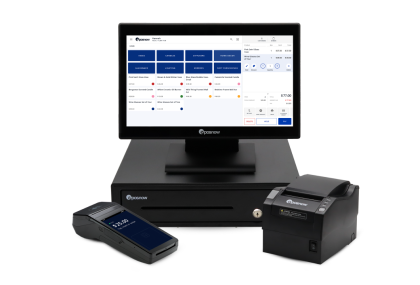The Importance of Pricing in Business
What is the right price for your product? It's a question that all businesses face, and there's no easy answer. When should you change your prices, and how often? Is it necessarily better to lower your profits to undercut the competition and capture a larger market share?
With price wars that eat into profit margins and the many ways pricing can play into a business's marketing, the true cost of getting pricing wrong can be reflected in sales volume, customer acquisition, the reputation of the company, and an infinity of other ways.
Establishing production cost
Cost-based pricing is one of the more basic but often practical methods of pricing a product. To establish profit margins, managers need to calculate all the associated costs of making, selling, and delivering their product. These include:
-
Material costs: The cost of the raw materials used to make the product
-
Direct labor costs: Wages paid to employees who work on the production line
-
Manufacturing overhead: Factory rent, machinery, other general production costs
-
Selling and marketing, lead generation, shop, site rental, and maintenance
The importance of pricing based on actual cost
When businesses establish production costs, they must account for true costs with all factors included. It's easy to recognize the costs directly associated with a product, but other expenses, referred to as overhead costs, can be hard to calculate.
Keeping track of expenses is a vital component of the price calculation and quantifiable income and expenditure data, which accounting programs help to document. The importance of pricing based on accurate cost-price estimations is so significant because inaccuracy can lead to over-pricing and losing market share or underestimating the value of your product.
Cost-based pricing and establishing a pricing strategy
Despite the difficulties in establishing cost-price, businesses like using cost-based pricing strategies because of their simplicity compared with other approaches. Small businesses short on resources can price products quickly and without too much analysis.
Businesses using this pricing strategy use a fixed amount or percentage added to the cost to guarantee a decided profit margin. It can be easily applied to products or services, thus establishing a way of making money while simplifying the pricing process.
A further advantage of this strategy is its adjustability. If a production cost increases or they take on new staff, or purchasing expenses rise, the product price can be quickly recalculated to maintain the agreed profit margin.
The importance of pricing and perceived value
However, pricing products based on costs ignores several important factors, for example, what customers are willing to pay. Sometimes, the price a customer is willing to pay can be very different from the cost of making the product. Consider luxury items such as watches and designer handbags. The manufacturing costs might be relatively low, but the perceived quality of the products leads customers to place higher value.
In situations where better quality is a major determinant of value, cost-based models can lead businesses to offer lower prices when customers would be willing to pay extra. In fact, goods and services in the luxury industry can suffer reduced sales from underpricing as price can be used to suggest quality. This effect led to the development of what price experts call "prestige pricing."
Valuation and prestige pricing
The complex relationship between price and value cannot be demonstrated more clearly than through value pricing approaches such as prestige pricing. In this pricing strategy, businesses charge high prices for their products to create an aura of exclusivity and quality.
It's a pricing model that's more concerned with the psychological impact of pricing rather than the cost of making the product. Businesses using prestige pricing are more interested in creating an air of luxury and desirability than in providing value.
Businesses beyond the luxury industry still use prestige when putting a price on a product. The psychological connection between higher prices and quality transfers to the food industry, clothing, and many other areas of commerce. When consumers think along these lines, not only can low prices suggest a lack of quality, but in some industries, it can lead to an erosion of trust in brand. Consumers even suppose there may be hidden costs (subscription services are often prone to this skepticism in their consumers).
Prestige is a pricing strategy that can be an effective way of increasing market share and customer loyalty, as well as generating higher profits. However, for prestige pricing to be successful, businesses often need to have established enough brand recognition that their name attached to a product in itself provides the impression of quality. This often limits the utility of prestige pricing to medium-sized businesses and beyond, which small businesses would need to grow before benefitting.
Market-based pricing decisions
Value-based pricing methods frame profit potential in a way that cost-based methods don't. It moves away from methods that focus on a "reasonable" profit the business can expect from a sale and into the realm of potential in the product.
The ambition of value-based pricing is to suppose there is value in the product for the customer to enjoy that cannot be quantified in the production expenses the company accrues. From this perspective, businesses using cost-based pricing could charge more money for products deemed valuable by consumers.
However, not every price needs to be determined by perceived value or a preset profit margin. Businesses regularly use competitors' prices to determine where they should position their products relative to the others available.
Strategic pricing to compete
Competitive pricing seeks to capture sales from others in the market by providing better value or simply lower prices for the same products or services. Given how little time it takes customers to check your competitors' price tags, which they can do over the internet even while on-site, this can be a delicate method to employ effectively.
For companies that want to use market-oriented pricing, here are two approaches:
-
Penetration pricing: setting initially low price levels for a product to attract customers and increase market share.
-
Price skimming: setting a high initial price for a product to take advantage of early adopters before competitors enter the market.
Both pricing strategies have advantages and disadvantages, and deciding which one to use depends on the specific product and market.
Penetration pricing
Businesses usually employ penetration pricing to lead customers through the door, allowing the business to establish relationships with them and stimulate interest. The hidden value of penetration pricing comes in the delayed benefit of capturing the market.
Penetration pricing implies that leaving money in customers' pockets temporarily provides the opportunity to recoup any losses further down the line following a price increase, retaining as many customers as possible.
Price skimming
The near opposite of the penetration model, businesses employing price skimming techniques increase profits in the short term before reducing prices. Through creative marketing or with niche products, new releases products will have some consumers eager to buy and willing to spend more for what they want.
This pricing strategy is prevalent with digital products, which can be released at different price points to appeal to other markets with different purchasing power. For example, a new video game might have a collector's edition with extra content that's priced significantly higher than the standard edition.
Price products to improve sales
It's a common misconception that businesses always need to lower their prices in order to improve sales. In fact, if you price products too low can often have the opposite effect, leading customers to believe that the quality of the product is poor.
However, product bundles can offer the low prices associated with a penetration price but the profitability on each sale of skimming. By pooling items together, product bundles offer consumers a low price on each item on the condition they make a larger number of purchases.
Businesses use bundles to gain extra sales to achieve overall benefits providing value to both companies and consumers.

Epos Now provide the very best business tools with the flexibility to fit any business with what it needs to flourish:
- Create a full business suite on a solid POS foundation with integrated card payments, online store, multi-site and multi-channel options
- Sell your own way with hardware and software options for every industry
- Save time with seamless card integrations on mobile and countertop EFTPOS devices
- Know your business better with hundreds of detailed, easy-to-read business reports
Finding the right pricing model
The importance of pricing using multiple strategies can be seen by thinking about the different revenue scenarios businesses might want to achieve:
-
For businesses with a low margin and high volume product, penetration price can effectively stimulate demand.
-
If a business has a new product in a niche market, price skimming allows them to take advantage of early adopters before competitors enter the market.
-
For companies that want to increase profits in the short-term, price products at a higher price point can be effective.
Pricing is a complex issue for businesses, but it's one of the most essential factors in ensuring profitability and capturing markets. By understanding how they can complement each other, many business owners build a business model with variable-cost products serving different purposes to the enterprise.
Choosing a suitable model for your product lines
The most vital component of this is to play to the strengths of each method to gain the full benefit of each method.
For instance, when customers start buying low-priced products, running loyalty programs and building a marketing strategy based on email campaigns will help retain contact with those customers.
With this foundational setup, having other products with higher profit margins, perhaps some rarer or specialist lines or services, luxury products, or more valued brands, businesses can boost sales on those products and build adequate revenue.
Changing price in changeable times
 Price elasticity is the measurement of how demand for a good changes when the price is raised or lowered. If customers are very price sensitive, then a slight change in price can result in a big drop in demand.
Price elasticity is the measurement of how demand for a good changes when the price is raised or lowered. If customers are very price sensitive, then a slight change in price can result in a big drop in demand.
Reviewing your prices and sales figures on a regular basis can help ensure your strategy remains effective. However, when business owners simply understand their industry, they can better understand whether the purchasing habits of customers are likely to change if they notice price changes.
Know how your industry operates
Pricing affects different industries in different ways and receives different responses throughout the business world. Price elasticity affects the luxury and living essential worlds in entirely different ways. For instance, if the cost of a luxury item goes up, then consumers will stop buying them as the price paid no longer seems good value, and they do not have to buy it.
However, people cannot choose not to buy food. While they can buy the cheapest food they can find, most people will still want to purchase foods they like, making the food industry inelastic.
Value price experts can use price elasticity to assess how important changes in the market bear on industries. If competitors raise their prices, then undercutting them to penetrate the market might not be necessary, as consumers will continue to buy at higher prices.
The importance of pricing based on good data
Detailed reporting is critical to understanding price changes, customer behavior, and other vital issues such as seasonality.
Technology has drastically changed the way businesses operate and has placed emphasis on data-driven decision-making. In the past, business owners would have to make decisions based on their own experience or intuition.
Today, there are some excellent programs and systems businesses use to help them make adjustments as they trade. No tool gathers more data than the POS systems they use.
The importance of pricing through your POS becomes apparent when you see the amount of detail a POS accumulates automatically while you sell. Epos Now POS systems generate many detailed reports on sales, split by product, category, employee and location, the time and date products sell, and much more.
What to look for in sales data
When analyzing your data, looking for a drop-off in sales volume can help you ascertain if a product is being rejected on price or is affected by other factors. Knowing the importance of pricing based on an understanding of the influential factors in a consumer's mind can lead to better decision-making.
For instance, if product sales go down without a price change, consider whether competitor prices have changed, if the product might be affected by seasons, holidays, or current affairs, or if another product that you or a competitor is selling could be affecting its popularity.
Which price works better?
On the other hand, if you note the date you change price and observe whether sales rise or fall, you can judge whether the new price works better for the product and can either keep the new price or return to the former.
Furthermore, POS systems do not just record the number of sales but also the profit margins. Epos Now systems (if you input your calculated cost price) calculate the total profitability of a product and help you assess the success of the business.
You may sell a product more times at a lower profit margin or take a high cut on fewer sales. Calculating which makes you more money takes a lot of work, but a retail POS system will do this automatically.
The price is always right when you price on the right POS
Managing and running your business is easier with technology that has every tool you need. Epos Now POS (point of sale) understands the importance of pricing and has POS hardware and POS software to suit your needs, generating hundreds of reports to help you know more about your business, and feel certain when the price is right.
Epos Now customers can:
-
Create bespoke transaction setups on secure, speedy software to shave time off the sales process
-
Choose from hundreds of apps and integrable partner programs to run accounting, marketing, and other back-of-house functions in a way that suits you
-
Access reports and manage prices and inventory on-site or off, night or day, through cloud technology
-
Purchase all the retail or hospitality POS hardware and software and receive expert advice and support around the clock to get the best out of your business
To find out more about Epos Now solutions, submit your details below and speak to a member of our expert team.
Epos Now solutions are the trusted foundation of over 40,000 businesses all over the world!




